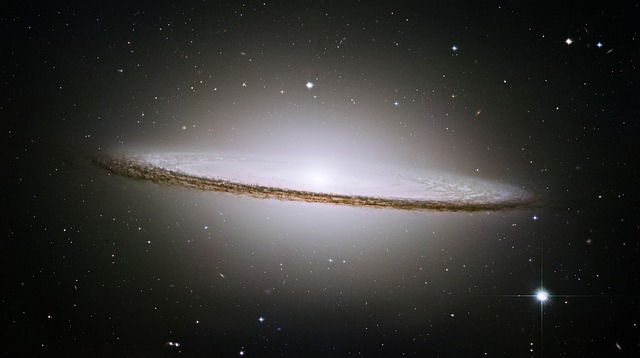
New discoveries are always exciting. And those about space are especially fascinating because there’s simply something about the cosmos that never fails to spur interest. Admit it, you can’t help getting drawn to pictures of stars and galaxies, right?
Which brings us to this latest bit of information: astronomers have discovered a new galaxy. And it’s not just any kind of galaxy. It’s one we’ve never seen before.
They’re calling it PGC 1000714 and it’s located approximately 359 million light-years from our planet. Details about this newly discovered galaxy are provided in a research published through the journal Monthly Notices of the Royal Astronomical Society. Burcin Mutlu-Pakdil, a graduate student at the Minnesota Institute for Astrophysics, led the study.
PGC 1000714 is categorized as a Hoag-type galaxy — the name is derived from astronomer Art Hoag who is credited with the discovery of this kind of cosmic body (named Hoag’s object) in 1950. Hoag-type galaxies are theorised to be the result of two colliding galaxies and are characterized by a circular core surrounded by a circular ring, with nothing visible connecting them.
Right now, most of the galaxies we know of are shaped like a spiral or like a disc. Because Hoag-type galaxies are quite rare, the discovery of one is seen as a big deal since it is these unusually shaped galaxies that have the potential of providing us with a better understanding of how galaxies form and evolve.
Initially, PGC 1000714 was observed to have two rings — an outer ring that mostly consists of bright young blue stars approximately 0.13 billion years old, and an inner ring that is made up of older, redder less brighter stars around 5.5 billion years old. Further inspection revealed, however, that PGC 1000714 didn’t have just one inner ring; it had two. And the second inner ring was also composed of old red stars — ‘what appears to be an older diffuse red inner ring’ says astrophysicist Patrick Treuthardt, a co-author of the study.
The two inner rings are unusual enough. More so is the fact that there doesn’t seem to be anything connecting the two rings. And this is what makes the discovery of PGC 1000714 even more exciting.
Nobody has any concrete explanation yet on how the formation of this galaxy came about. Their best speculation postulates that the galaxy as it is now may have been formed over two separate time periods, with the outer ring absorbing parts of a nearby gas-rich galaxy, and the inner rings being formed in some other way. In what way? That’s one of the mysteries that will have to be solved. Nothing is known for certain right now. But when they know, we’ll know. That much we can be sure of.
- Bulenox: Get 45% to 91% OFF ... Use Discount Code: UNO
- Risk Our Money Not Yours | Get 50% to 90% OFF ... Use Discount Code: MMBVBKSM
Disclaimer: This page contains affiliate links. If you choose to make a purchase after clicking a link, we may receive a commission at no additional cost to you. Thank you for your support!




Leave a Reply